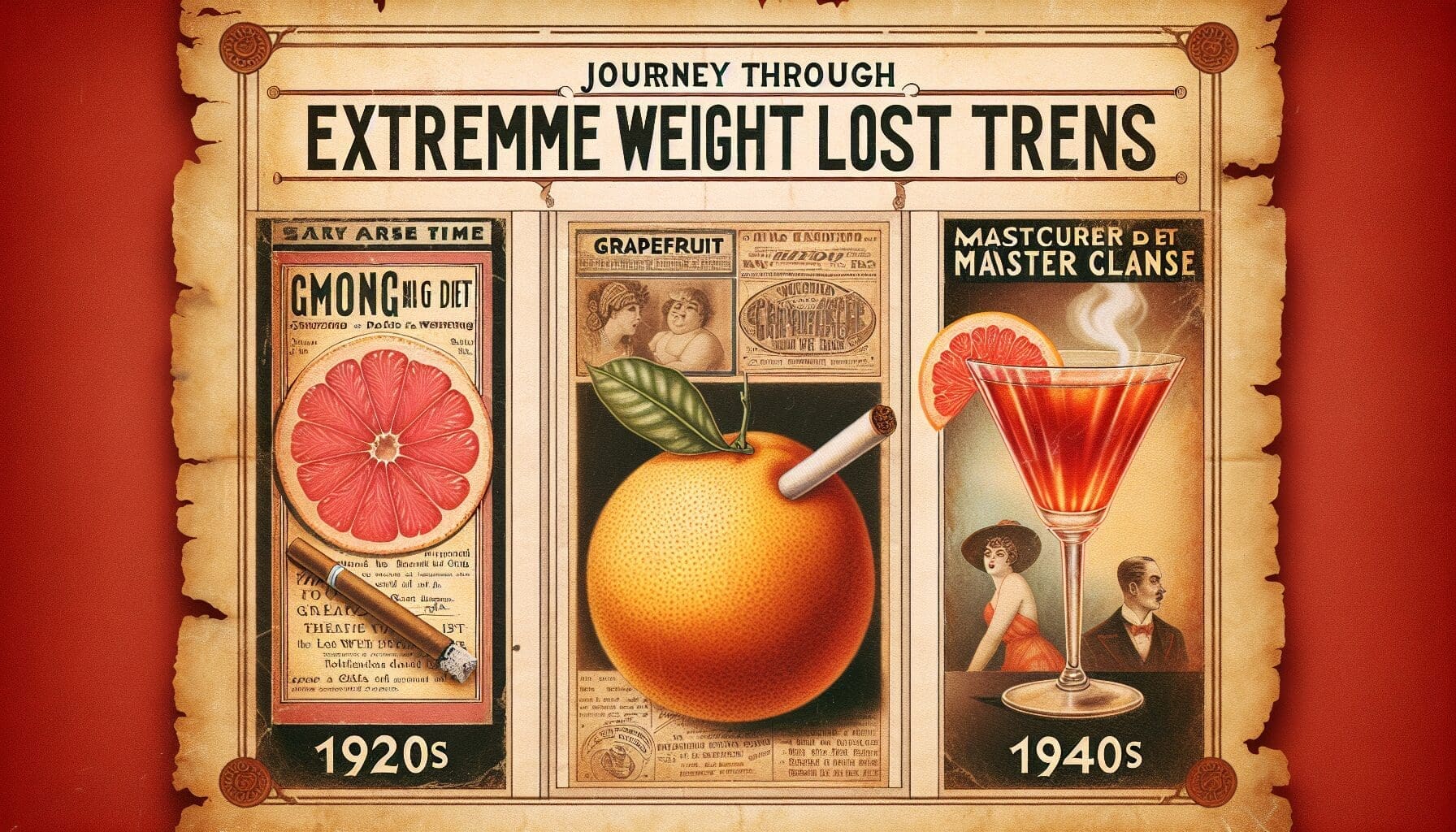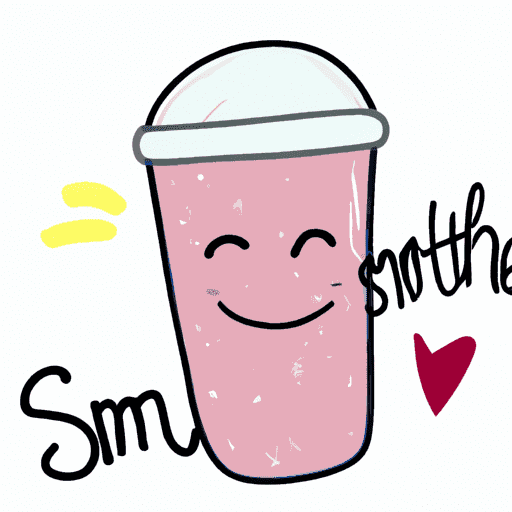Fad diets have long captivated those looking to shed pounds quickly, often with questionable methods and sustainability. This blog will explore some of the most extreme weight loss diets throughout history, uncovering their origins, methods, and outcomes.
🌟 Let’s Start
Fad diets have always sparked intrigue and skepticism. They promise rapid weight loss and a quick fix to our dietary dilemmas, often leaning on bizarre methods and unproven science. As we delve into the world of these diets, we will uncover the motivations behind their popularity, the history of their emergence, and their impact on our health.
The allure of quick results can be tempting, especially in a society that prioritizes appearance over well-being. However, these diets often lack sustainability, leading many to cyclical weight gain and loss patterns. Understanding this phenomenon is crucial for making informed dietary choices.
🚬 Smoking and Weight Loss
In the roaring 1920s, smoking was not just a social activity; it was marketed as a weight loss solution. Companies like Lucky Strike capitalized on nicotine’s appetite-suppressing effects, promoting cigarettes as tools for slenderness. Advertisements boldly proclaimed, “Reach for a Lucky instead of a sweet,” glamorizing an unhealthy habit.
These marketing strategies painted a dangerous picture, equating smoking with beauty and desirability. The reality, however, is that smoking has severe health consequences, including cancer and respiratory diseases. This trend highlights how societal pressures can lead to harmful choices in pursuit of an ideal body image.
🥗 Diets Through the Decades
Grapefruit Diet: The 1930s Craze
Fast-forward to the 1930s, when the grapefruit diet emerged, also known as the 18-day diet. This restrictive plan required dieters to consume grapefruit with every meal, limiting overall caloric intake to 500-800 calories per day. The belief was that grapefruit contained fat-burning enzymes, a claim that has since been debunked.

While grapefruits are nutritious, relying solely on them for weight loss is unsustainable and unhealthy. The fad diet’s emphasis on extreme caloric restriction often led to nutrient deficiencies and short-term weight loss that was quickly regained.
The Master Cleanse: 1940s Detoxification
In the 1940s, the Master Cleanse, or cayenne cocktail, became popular. This diet involved consuming a mixture of lemon juice, maple syrup, and cayenne pepper for at least ten days. Marketed as a detoxifying cleanse, it promised significant weight loss but offered little nutrition.
The Master Cleanse is a prime example of how detox diets can be misleading. While they may lead to initial weight loss, they do not promote long-term health or sustainable eating habits. Many individuals felt weak and dizzy due to the lack of essential nutrients.
Cabbage Soup Diet: 1950s Simplicity
The cabbage soup diet gained traction in the 1950s. This diet claimed that consuming large quantities of cabbage soup would lead to rapid weight loss. Participants were encouraged to eat the soup multiple times a day, often resulting in dramatic but temporary weight loss.
However, the diet’s lack of protein and essential nutrients led many to experience fatigue and health issues. The weight lost was primarily water weight, and participants often regained the pounds quickly after returning to a normal diet.
Taibo and Home Workouts: 1990s Fitness Fads
In the 1990s, fitness fads like Taibo emerged, combining martial arts with dance and boxing. This home workout trend promised calorie burning and muscle toning without a gym membership. While it encouraged physical activity, many were injured due to improper form and lack of guidance.

Although home workouts can be effective, they should be approached with caution. Proper technique is essential to avoid injuries, particularly for those new to fitness. Taibo exemplified the shift towards at-home fitness and highlighted the importance of structured workouts.
Slim Fast: The 1980s Meal Replacement Revolution
In the 1980s, Slim Fast took the diet world by storm as a meal replacement shake. This diet allowed users to replace two daily meals with shakes and consume one sensible meal. While it provided convenience, it also raised questions about nutritional adequacy.
Though Slim Fast offers a quick solution for weight management, the long-term sustainability of such diets is questionable. Many dieters found themselves reverting to old eating habits, leading to weight regain. This trend reflects a broader issue within fad diets: neglecting balanced nutrition.
The Baby Food Diet: 2010s Nostalgia
In the 2010s, the baby food diet captured attention, with celebrities endorsing it as a quick weight loss solution. The diet involved replacing meals with baby food jars, which typically contain fewer calories. While it might seem harmless, this approach raises concerns about nutritional balance and satisfaction.
This diet highlights the dangers of restrictive eating patterns. While some individuals may experience quick weight loss, lacking variety can lead to nutrient deficiencies and an unhealthy relationship with food. Sustainable weight loss requires a balanced approach that includes a variety of foods.
Weight Watchers: A Structured Approach
Weight Watchers, developed in 1963, introduced a point system for food, promoting mindful eating. Members are assigned daily points based on their weight loss goals, focusing on zero-point foods like fruits and vegetables. This program emphasizes portion control and encourages participants to make healthier choices.
While Weight Watchers has proven effective for many, it underscores the importance of moderation rather than deprivation. It encourages individuals to enjoy their favorite foods while being mindful of their overall intake. This approach can foster a healthier relationship with food and promote long-term success.
💪 Taibo
Taibo, a dynamic blend of martial arts and dance, gained immense popularity in the 1990s. Created by Billy Blanks, this workout promised to burn calories and tone muscles while allowing participants to exercise from the comfort of their homes. Taibo sessions often included a mix of punches, kicks, and dance moves, making it a fun and engaging way to get fit.
While Taibo encouraged physical activity, it also came with risks. Many participants faced injuries due to improper form or overexertion, particularly if they were new to exercise. The lack of professional supervision in home workouts can lead to dangerous situations, especially when involving high-energy moves.
Despite these concerns, Taibo played a crucial role in the rise of home fitness. It demonstrated that getting in shape could be enjoyable and accessible. However, it also highlighted the importance of understanding one’s limits and focusing on proper techniques to avoid injuries.
🥤 Slim Fast
Slim Fast emerged as a meal replacement option in the 1980s, capturing the attention of dieters everywhere. The concept was straightforward: replace two meals daily with a shake and enjoy one balanced meal. This approach provided convenience, but it raised questions about nutritional adequacy and sustainability.

While Slim Fast offered a quick fix for weight management, many users found it challenging to maintain long-term. The diet’s restrictive nature often led to cravings and a return to old eating habits, resulting in weight regain. This trend reflects a broader issue with fad diets: focusing on short-term results rather than long-term health.
Created by Daniel Abraham in 1976, Slim Fast reported impressive earnings and reached millions of users by the 1990s. However, the diet’s effectiveness varied widely among individuals. Many realized that relying solely on meal replacements was not a sustainable lifestyle choice.
👶 Baby Food Diet
In the 2010s, the baby food diet gained traction, largely due to celebrity endorsements. This unusual diet required individuals to replace their meals with baby food jars, which typically contain fewer calories. While the concept may seem harmless, it raises significant concerns regarding nutritional balance and satisfaction.

Proponents claimed that substituting regular meals with baby food could lead to rapid weight loss. However, this approach often resulted in nutrient deficiencies and unhealthy food relationships. The monotony of eating baby food can lead to feelings of deprivation, making it challenging to stick with the diet long-term.
Notably, Jennifer Aniston reportedly used this diet to prepare for her role in “Just Go With It,” losing weight quickly. However, the sustainability of such drastic measures is questionable. Long-term weight management requires a balanced approach that includes a variety of foods to ensure adequate nutrition.
📱 Gadgets
As the quest for quick weight loss continued, various gadgets emerged throughout the decades, promising miraculous results with minimal effort. These devices often capitalized on the desire for easy solutions, but many proved ineffective and harmful.
Vibrating Belts: The 1960s Sensation
One of the most notorious gadgets was the vibrating belt, which gained popularity in the 1960s. Marketed as a revolutionary way to melt away fat, users would strap the belt around their waist and let the vibrations do the work. The promise? A slimmer waist without any exercise.
However, the reality was far from the claims. After using the belt, many found no significant difference in their body composition. It was a classic example of how marketing can mislead consumers into believing in quick fixes. The vibrating belt became a symbol of laziness in the fitness community, emphasizing that no gadget can replace the need for physical activity.
The Thigh Master: A 1990s Icon
In the 1990s, the Thigh Master became a must-have fitness gadget. This simple device promises to tone thighs and strengthen muscles with just a few daily squeezes. Many moms and fitness enthusiasts jumped on the bandwagon, believing they could achieve their desired results without hitting the gym.
Yet, the Thigh Master was criticized for lacking resistance and effectiveness. Users often found it a glorified stress ball rather than a legitimate workout tool. While any exercise is beneficial, relying solely on such gimmicky gadgets can lead to disappointment and hinder real progress in fitness goals.
🍞 Atkins Diet
The Atkins Diet emerged in the 1990s as a response to the growing anti-carb movement. It proposed that carbohydrates were the enemy, promoting a low-carb lifestyle that many found appealing. The allure of weight loss through eliminating carbs was hard to resist, leading to widespread adoption.
Initially, followers of the Atkins Diet were promised rapid weight loss by drastically reducing carbohydrate intake, often to as low as 20 grams per day during the initial phase. This approach led many to believe they could indulge in high-fat and high-protein foods without consequence. However, the long-term effects of such a restrictive diet raised concerns.
Understanding the Impact of Low-Carb Dieting
While many experienced significant weight loss on the Atkins Diet, the sustainability of such a lifestyle is questionable. Avoiding complex carbohydrates like oatmeal and whole grains can lead to nutrient deficiencies and long-term health issues. Moreover, the diet’s rigid structure often resulted in feelings of deprivation, making it challenging for individuals to maintain their progress.
Modern Perspectives on Carbohydrates
Today, nutritionists advocate for a balanced approach to eating that includes healthy carbohydrates. Rather than labeling carbs as “good” or “bad,” focusing on the quality of the carbohydrates consumed is essential. Whole grains, fruits, and vegetables are crucial for a well-rounded diet that supports overall health.
In conclusion, the Atkins Diet reminds us of the importance of moderation and balance in our dietary choices. Quick fixes may yield temporary results, but true health and wellness come from sustainable habits that nourish the body and mind.









Be First to Comment